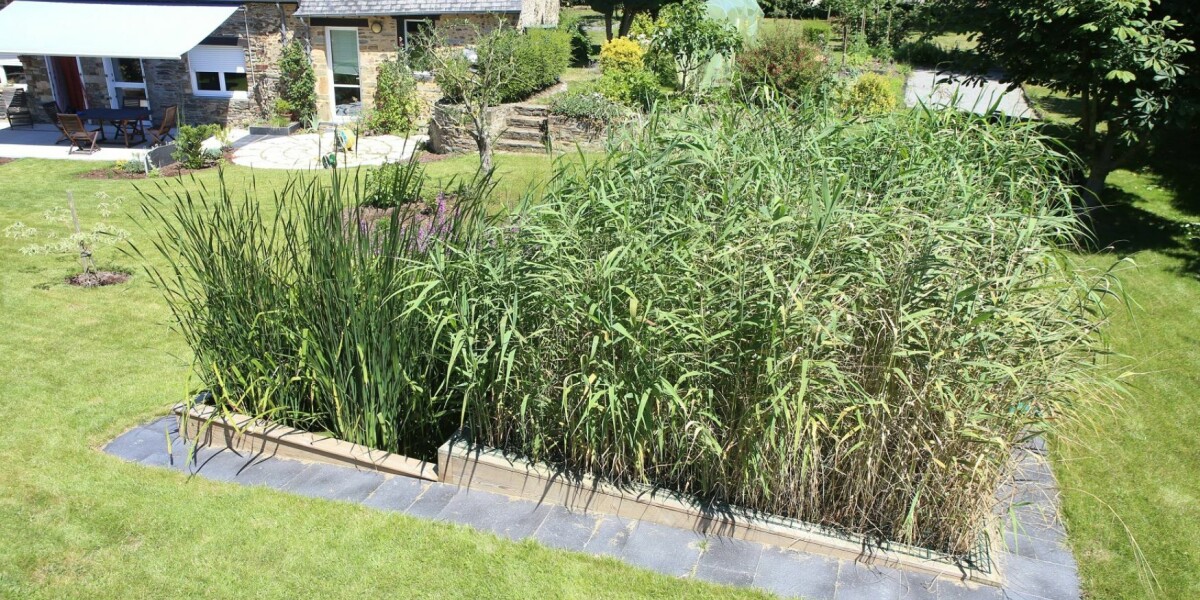
- Select a language for the TTS:
- UK English Female
- UK English Male
- US English Female
- US English Male
- Australian Female
- Australian Male
- Language selected: (auto detect) - EN
Play all audios:
THE PLANTS’ ROOTS AND BACTERIA NATURALLY TREAT HOUSEHOLD SEWAGE WITHOUT THE NEED FOR PUMPS OR REGULAR EMPTYING A way of using plant beds for home sewage treatment as an alternative to septic
tanks has been developed by a French company and approved by the authorities. Large sewage plants have used reed beds as part of the treatment process for years. In the 1990s, smaller
systems were also developed for village-scale treatment plants in France. One of the people who helped sell the small systems, Martin Werckmann, says he was approached by someone in 2003 who
was looking for something similar to install in a new-build eco home in Brittany. “Through my work, I knew most of the players in the field and together we came up with a system,” Mr
Werckmann said. “We got approval, and in 2007 formed our company Aquatiris to develop the idea.” READ MORE: EXPLAINER: THE RULES AROUND SEPTIC TANKS IN RURAL FRANCE MINISTERIAL APPROVAL
GIVEN FOR CURRENT SYSTEM Early research was backed by Brittany regional council, and a 2009 law change made it easier for plant-based systems to be considered by authorities. “The timing was
perfect,” said Mr Werckmann. The firm has since been given ministerial approval for an improved process it developed in 2014, which is the basis for all the systems it now installs. Reeds
are the most efficient plants for treating sewage, growing from rhizomes in the spring and dying back in winter. Some people cut them back when they start to look messy in winter, but others
leave them as they are until the following year’s reeds push through. The firm claims there are no unwanted smells. Other flowers and shrubs can be grown alongside them and behind the bed,
and the treated water keeps them irrigated. The treatment process is called _phytoépuration_, or phyto-purification, and relies on the filtering effect of the plants’ roots, coupled with
bacteria and other microorganisms. READ MORE: HOW OFTEN MUST I EMPTY MY SEPTIC TANK IN FRANCE? THE FIRST YEAR IS OFTEN THE MOST DIFFICULT Aquatiris is continuing to expand through a system
of franchises with septic tank installers and landscapers, who are trained to install the beds. Prices are usually 20% more expensive than a septic tank installation. “Obviously, with a very
small garden, things get complicated, but if it is bigger than 200m² there is usually no problem installing one of our systems,” said Mr Werckmann. The first year is often the most
difficult: while the young reeds are growing, they do not shield the toilet paper and other solids that arrive in the bed. A grille is installed, which hides the filter and for the reeds to
grow through, and sometimes an additional cover is put in place until the reeds are full size. Mr Werckmann said the system appeals to environmentally-conscious people because, unlike septic
tanks, it does not emit large amounts of methane or sulphur dioxide. The reed beds also provide a feature in the garden, and there are fewer breather pipes and inspection hatches than with
septic tanks. “It is more expensive, but the running costs are minimal, there is no need for the tank to be emptied, and there are no electric pumps,” he said. Drainage out of the reed beds
is optimised to act as irrigation for flowerbeds or shrubs, but should not be directed to vegetable beds. READ MORE: REUSING HOUSEHOLD WATER TO FLUSH TOILETS MAY GET GREEN LIGHT IN FRANCE
SYSTEM IS SUITABLE FOR SECOND HOMES The reeds die down in dry spells when the house is not occupied and there is no water from the drainage system, but quickly regenerate when the house is
used. With a full set of official certifications, approval by local authorities is usually straightforward. The firm has also developed a system of grey water recovery to treat water from
showers, baths or sinks for use in vegetable beds. It involves putting a valve on a downpipe and directing the water to a large pot filled with a filtering plant. A second pipe at the bottom
of the pot leads to the garden. “It works very well in summer,” Mr Werckmann said. “In winter, you simply turn the valve so it flows into the usual system again.” RELATED ARTICLES GREEN
NEWS FRANCE: €110M FOR HEDGEROWS, MARINE PROTECTION FOR NICE EXPLAINER: THE RULES TO KNOW ABOUT USED WATER AT A HOME IN FRANCE PROJECT TO MAKE WASTEWATER FIT FOR DRINKING IN FRANCE








